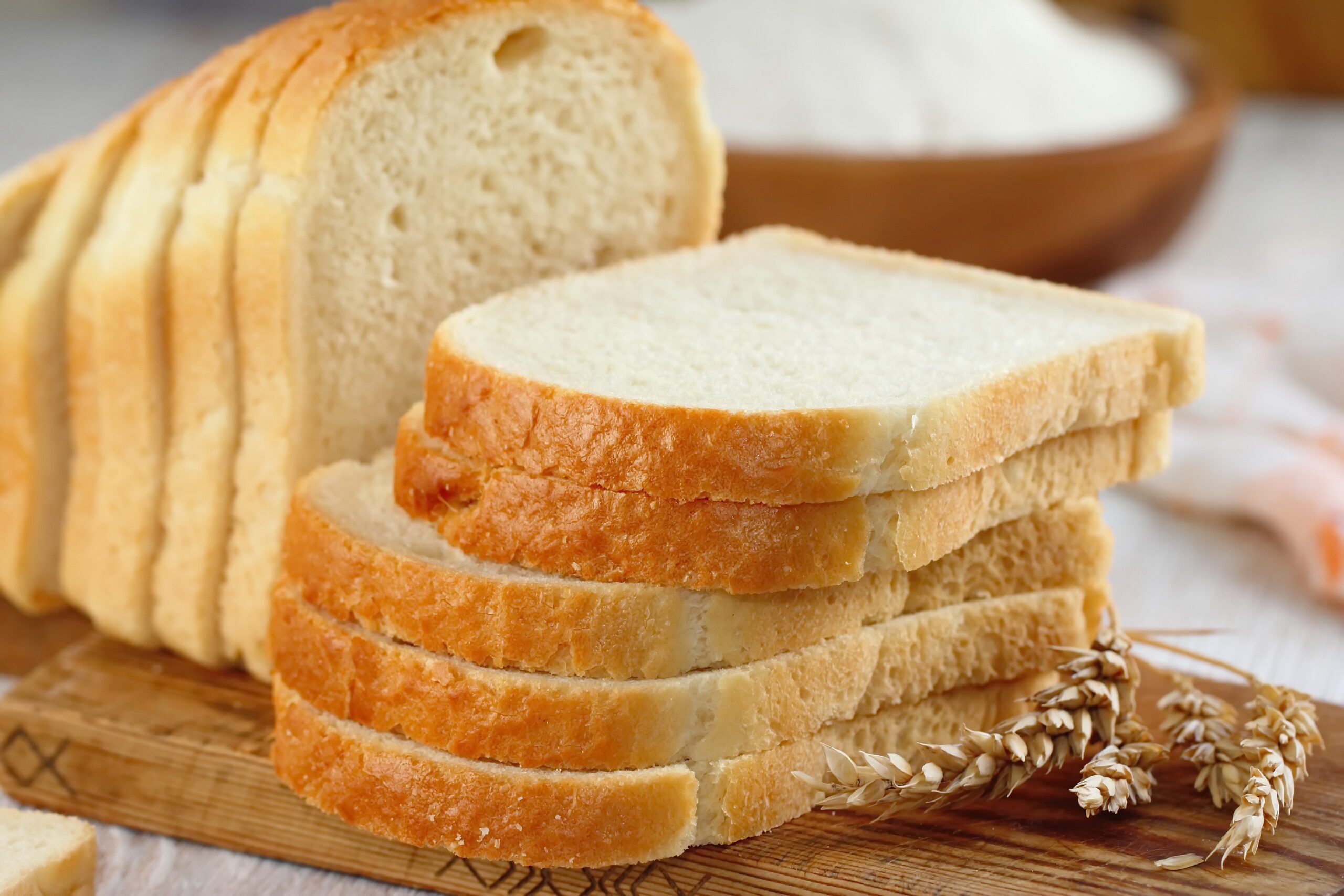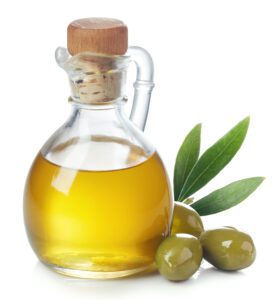Additives in White Bread Linked to Cancer, Respiratory Problems, and Other Toxic Effects
June 14, 2024
 308
308 
Traditionally, white bread in the USA is made through a process that includes mixing, fermentation, proofing, baking, cooling, slicing, and packaging. This process uses basic ingredients like wheat flour enriched with vitamins and minerals (such as niacin, iron, thiamine mononitrate, riboflavin, and folic acid), water, yeast, salt, sugar, and fat (such as butter, vegetable oil, or lard).
Unfortunately, they do not tell us about all the other additives used in this process that help cut baking costs, extend the bread’s shelf life, and ensure a consistent supply.
Many of these additives are banned in other countries and have shown evidence that they may be detrimental to your health, affecting your diet and fitness goals. Today, we are revealing the full list with the hope that you can make better decisions for you and your family’s health:
The key difference between European regulations and American regulations lies in that Europe takes a precautionary approach. They ban many additives that may be linked to potential health risks. On the other hand, the FDA still permits their use based on the “generally recognized as safe” designation until proven.
Some experts argue this results in greater exposure to potentially harmful substances for Americans compared to European. However, the FDA maintains its evaluation process ensures safety before approval.
You be the judge!
Keep these facts in mind…
RE: Lobbying and Business Interests- Experts have pointed out that lobbying and business interests have influenced the U.S. Dietary Guidelines for Americans. The guidelines have been criticized for being unduly influenced by food manufacturers and special interest groups. This influence leads to the perpetuation of outdated research and recommendations that do not align with the latest scientific evidence.
We recommend avoiding ultra-processed breads with lengthy ingredient lists and supporting local bakeries who use simpler methods and ingredients, or try baking at home to limit exposure to controversial additives.
Ezekiel bread is made from a mix of sprouted whole grains and legumes, including wheat, barley, spelt, millet, soybeans, and lentils. The sprouting process increases nutrient availability and makes the bread more easily digestible. It is also free from added sugars.
Sourdough bread is made from fermented grains, which reduces antinutrients and increases nutrient availability. It has a lower glycemic index compared to regular white bread, making it a better option for blood sugar control. However, it still contains gluten
Whole grain rye, is rich in fiber, B vitamins, and plant compounds called lignans. It supports gut health and has a lower glycemic index, which helps ito maintain stable blood sugar levels.
Sprouted grain bread is made from grains that have been allowed to sprout before being processed. This process reduces enzyme inhibitors and increases nutrient absorption. It is a good source of fiber, protein, and various vitamins and minerals.
Almond bread is a grain-free and gluten-free alternative made with almond flour, eggs, and spices. It is high in protein and fiber, making it suitable for those following a Paleo diet or those with gluten sensitivities. These alternatives offer various health benefits, including improved nutrient absorption, better blood sugar control, and enhanced digestive health.
While people have long made commercially produced white bread a staple in their diets, growing worries now focus on the potential health risks of some chemicals and the lack of emphasis on whole grains. This has prompted many people to seek alternative healthy diet foods that better match their dietary goals.
Choosing whole grain alternatives, which retain their natural nutrients and fiber, can provide a healthier option for maintaining a balanced diet.
https://www.prevention.com/food-nutrition/g20473340/healthiest-sandwich-bread/
https://www.bbcgoodfood.com/howto/guide/what-is-the-healthiest-bread
https://foodbabe.com/healthiest-bread-on-the-market/
https://www.world-grain.com/articles/18253-does-gm-wheat-have-future-in-us
https://www.farmprogress.com/farm-operations/fda-proposes-voluntary-healthy-food-label-claim
https://time.com/4130043/lobbying-politics-dietary-guidelines/
https://www.ncbi.nlm.nih.gov/pmc/articles/PMC8834264/
https://www.eurofinsus.com/food-testing/resources/usda-vs-fda-food-labeling/
https://www.fda.gov/inspections-compliance-enforcement-and-criminal-investigations/inspection-guides/guide-inspections-grain-product-manufacturers
https://www.ers.usda.gov/topics/food-markets-prices/processing-marketing/food-and-beverage-manufacturing/
https://www.bakeryandsnacks.com/Article/2013/08/20/When-will-FDA-finalize-guidance-on-whole-grain-labeling-statements
https://www.theguardian.com/us-news/2019/may/28/bread-additives-chemicals-us-toxic-america
https://www.knowyourrightscamp.org/post/experts-say-u-s-food-additives-banned-in-europe-are-almost-certainly-making-americans-sick
https://www.knowyourrightscamp.org/post/experts-say-u-s-food-additives-banned-in-europe-are-almost-certainly-making-americans-sick
https://nypost.com/2023/02/21/food-additives-banned-in-europe-are-certainly-making-americans-sick-experts/
https://www.greenlifephilosophy.com/what-is-wrong-with-bread-in-america/
https://www.livestrong.com/slideshow/1011109-10-ingredients-always-avoid-bread-plus-7-bread-brands-bets/
https://thebrotbox.com/blogs/news/difference-between-american-vs-european-wheat
https://bulknaturalfoods.com/articles/which-wheat-for-what/
https://www.thefreshloaf.com/node/71763/us-flour-vs-nonus-flour
https://www.delaheart.com/blogs/food/the-differences-between-american-european-wheat-gluten
https://www.ncbi.nlm.nih.gov/pmc/articles/PMC7497585/
https://pubmed.ncbi.nlm.nih.gov/3812500/
https://explore.globalhealing.com/what-is-azodicarbonamide/
https://www.fda.gov/about-fda/histories-product-regulation/food-standards-under-1938-food-drug-and-cosmetic-act-bread-and-jam
https://www.ncbi.nlm.nih.gov/pmc/articles/PMC8834264/
https://www.fda.gov/food/food-additives-petitions/azodicarbonamide-ada-frequently-asked-questions


In recent years, the quality and authenticity of olive oil have come under scrutiny, with shocking revelations about widespread fraud in the industry. A groundbreaking episode of the popular news program “60 Minutes” shed light on this issue, exposing a disturbing trend of adulteration in many well-known olive oil brands The “60 Minutes” Investigation The […]


The American food system is facing a critical challenge that has been decades in the making. A regulatory loophole from the 1950s has allowed food companies to operate with minimal oversight, potentially exposing consumers to thousands of untested chemicals in their daily diets. This situation has created a significant public health concern that demands immediate […]


This is outrageous and a serious threat to the human brain! Look at these headlines! Recent scientific studies have revealed alarming evidence of nanoplastic accumulation in various human organs, with the most shocking findings related to the brain. A preprint study from early 2024 found particularly concerning levels of microplastics in human brain samples Brain […]